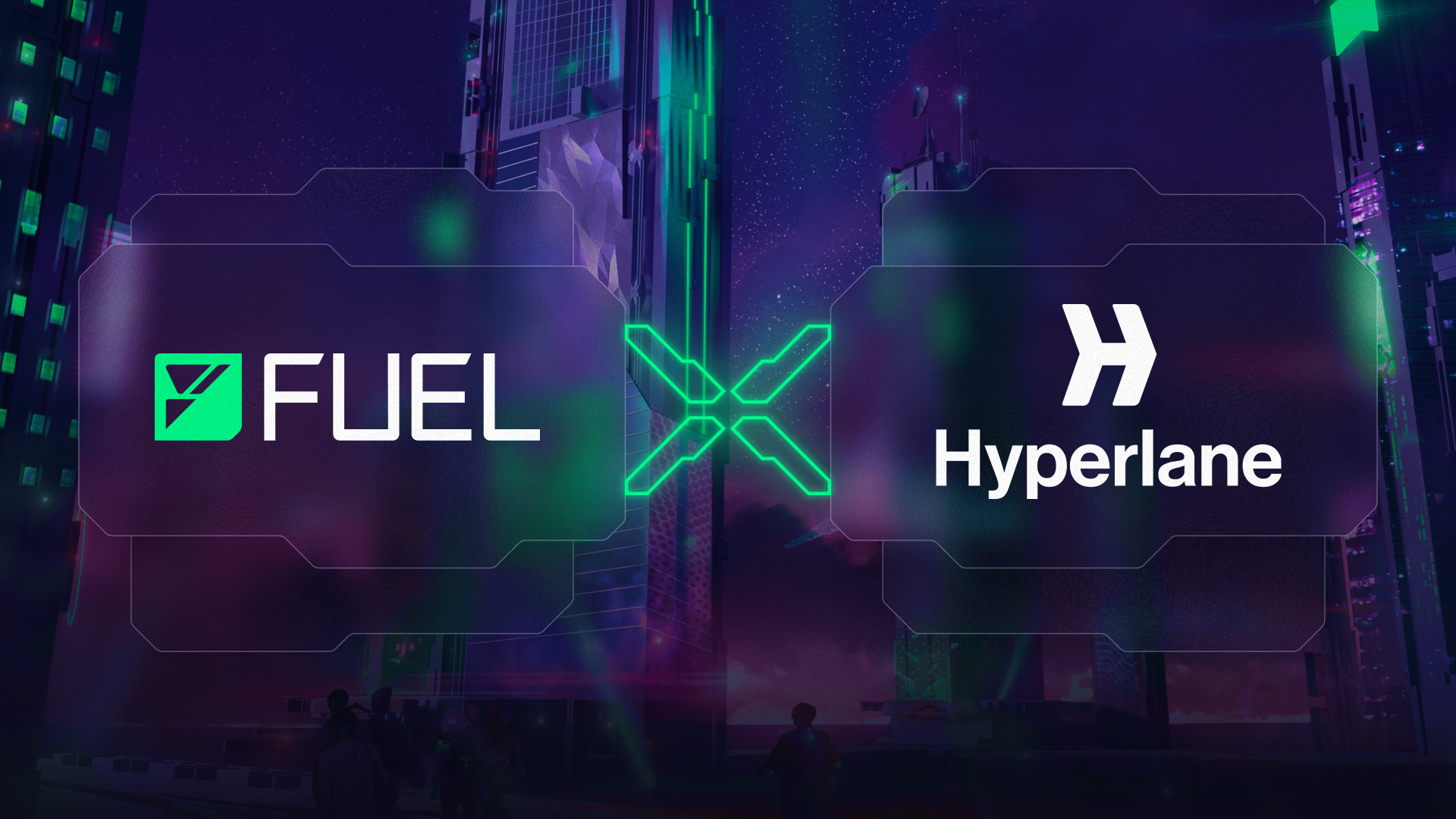Unlocking Permissionless Interoperability With Hyperlane
Fuel is integrating with Hyperlane to enable interchain applications and permissionless bridging with existing blockchains.

Fuel Labs is excited to partner with Hyperlane to expand Permissionless Interoperability to the Fuel ecosystem, unlocking an easy and permissionless way to connect with existing blockchains to onboard users.
Over the past couple months, the Hyperlane and Fuel teams worked to build a FuelVM-compatible Hyperlane deployment and bring interoperability to Fuel. Today, we’re excited to announce that Hyperlane will be the first interoperability layer of Fuel, and the Hyperlane interoperability stack will be ready at Fuel’s launch.
What is Hyperlane?
Hyperlane is the first Permissionless Interoperability layer, enabling anyone to bring the Hyperlane interoperability stack to any blockchain, out-of-the-box. With Hyperlane, developers can build Interchain Applications, apps that abstract away the complexity of interchain interactions and serve users on any connected chain. Additionally, Hyperlane’s modular security stack gives developers the power to customize their interchain security.
Hyperlane development is open-source and led by core developers at Abacus Works.
How Hyperlane Compliments Fuel’s Multi-chain Vision
Fuel is a significant advancement in blockchain tech. But it can all be for nothing without an easy and permissionless way to connect with existing blockchains to onboard users.
Currently, developers have to lobby permissioned interoperability teams to support their chains, and interoperability teams can’t keep up with manually deploying to every new chain. User and liquidity growth on new chains suffer as a result of this permissioned interoperability.
With Hyperlane’s Permissionless Interoperability now FuelVM-supported, Fuel stakeholders don’t need to worry. Fuel users and devs can now explore Hyperlane’s unique features:
- Permissionless Deployments of Hyperlane to any chain. In this case, any future FuelVM rollup can permissionlessly deploy Hyperlane to their chain for their interoperability needs.
- Permissionless bridging of any asset from any Hyperlane-supported chain with Warp Routes. This is especially important for onboarding users and liquidity from existing chains.
- Interchain applications, where your app can share state and liquidity with other instances on any Hyperlane-supported chain. This can significantly improve the user experience by moving complex bridging and chain-switching concepts to the backend.
Why Interchain Apps: Yama Finance
A quick case study on why interchain apps on Fuel make so much sense:
Yama Finance is a novel interchain stablecoin and lending protocol that enables borrowers to leverage up to 17x on volatile assets, magnifying yield as well as providing instant liquidity on-chain. Yama’s stablecoin is able to be teleported between different chains with no slippage or liquidity pitfalls through Hyperlane. Using Hyperlane, Yama will be able to burn and mint its stablecoin to any Hyperlane-supported chain for a seamlessly interchain experience.
Currently, Yama only has one instance on Arbitrum, but with Fuel mainnet it’ll be able to unlock the interchain synergies for its stablecoin. Yama’s stablecoin can serve as an instant liquidity bridge for users between Arbitrum and Fuel, through Hyperlane. Users can teleport their Yama stablecoin between the chains directly from Yama’s interface, without needing to switch tabs to an external bridge or wait on the official bridge. Smoother experience for users, faster liquidity exchange, and elevated utility for apps, all possible with Hyperlane.
Start building with Hyperlane x Fuel now, with Fuel’s docs and Hyperlane’s docs.
Fuel: All In on Scaling Ethereum
Ethereum’s commitment to a modular roadmap means that making computation more scalable and efficient on the execution layer is the next step in building a more scalable Ethereum ecosystem. Alternative VMs are a crucial piece of this puzzle, and Fuel is leading the charge when it comes to this challenge.
Fuel has been designed with developer experience at the forefront, and the Sway language is already gaining significant traction. By building a Rust-based DSL and comprehensive tooling that developers love, Fuel is positioned to attract scores of new developers to the ecosystem.
Because Fuel will be deployed on Ethereum, developers and users will be directly contributing to the growth of the Ethereum ecosystem, rather than migrating to alternative L1s.

